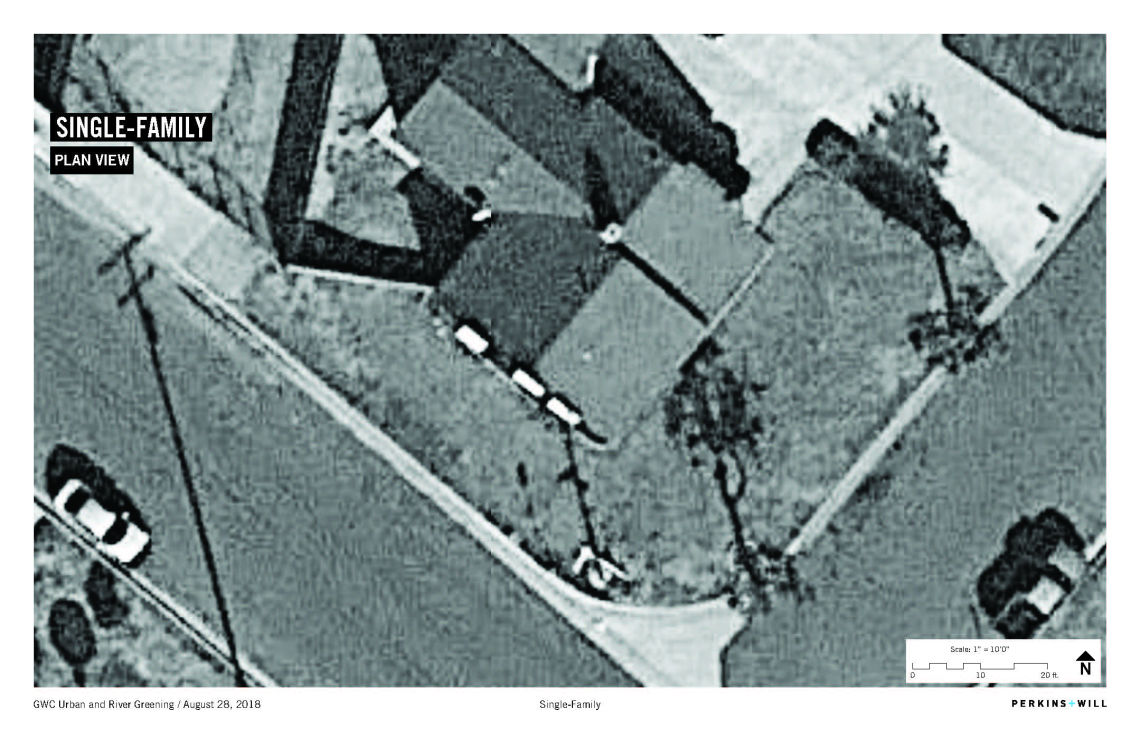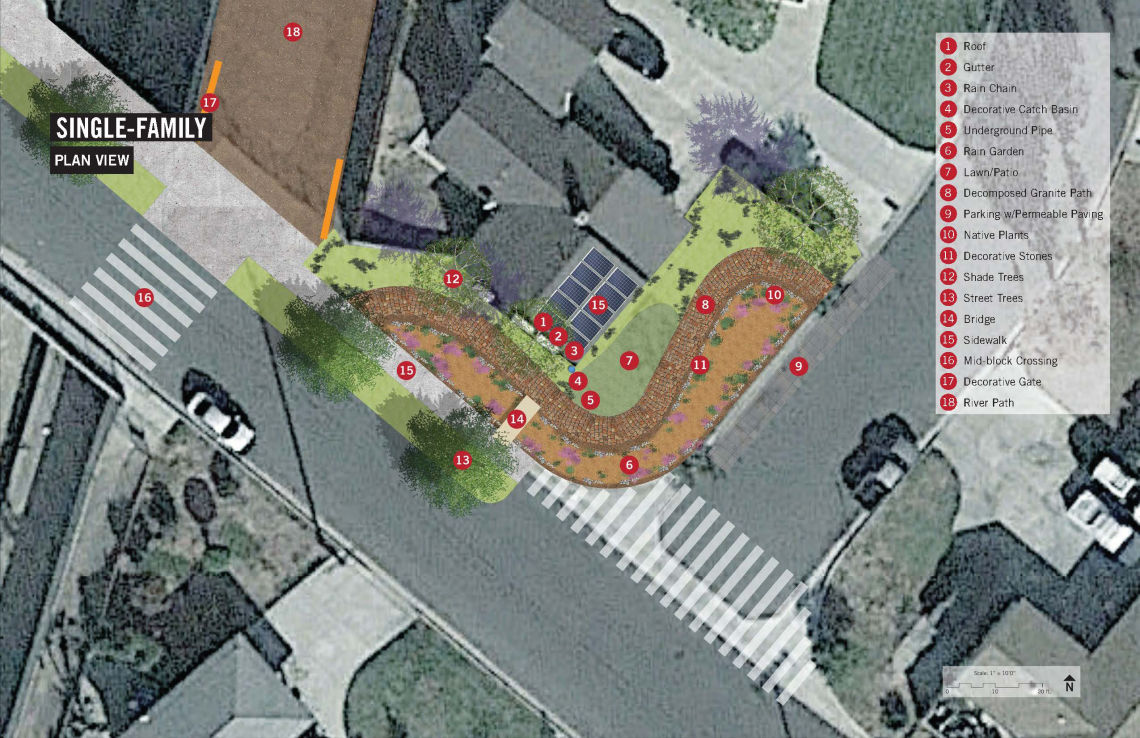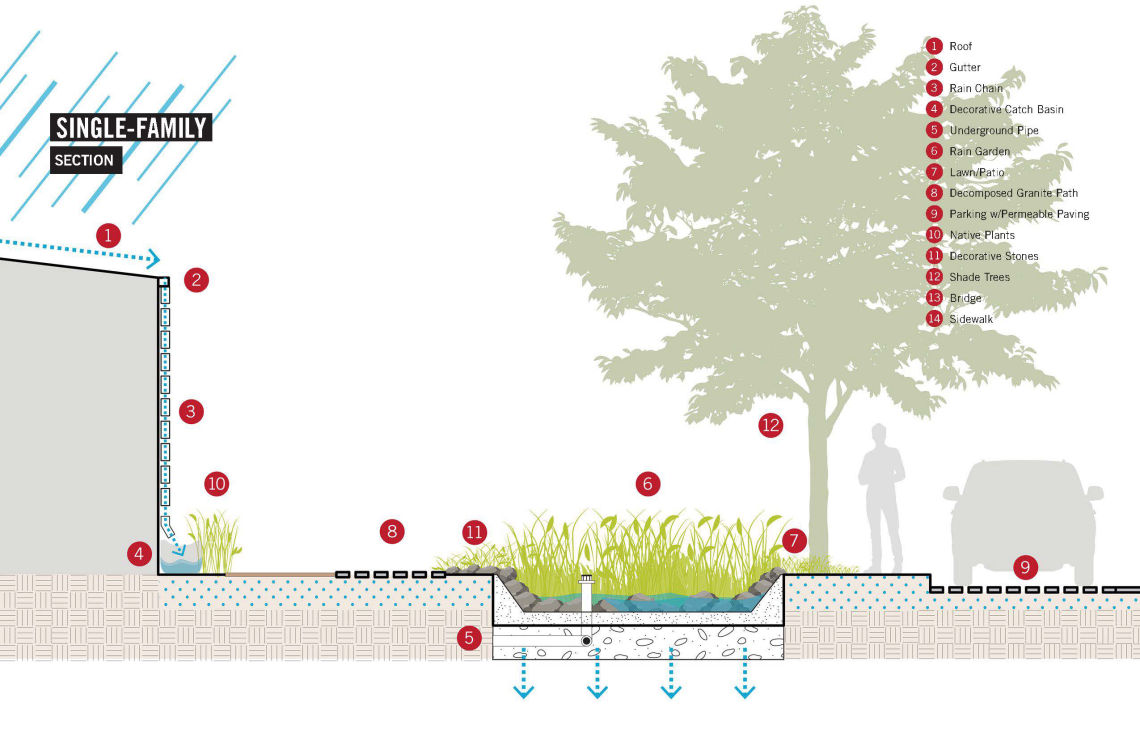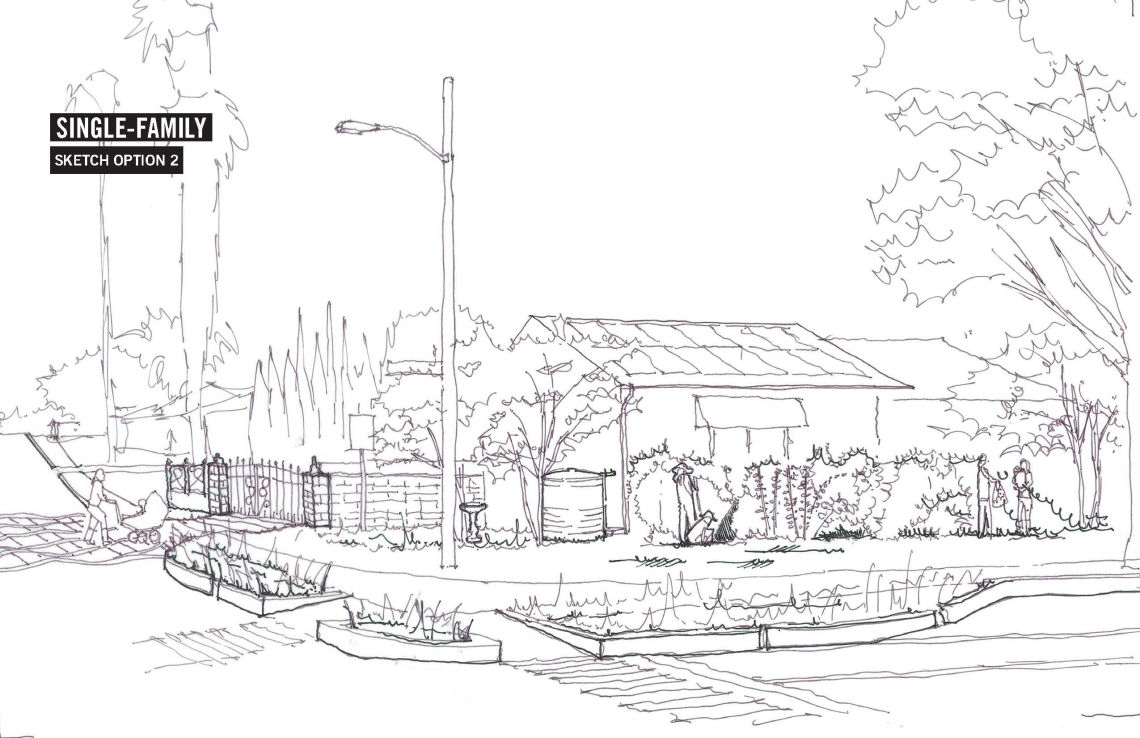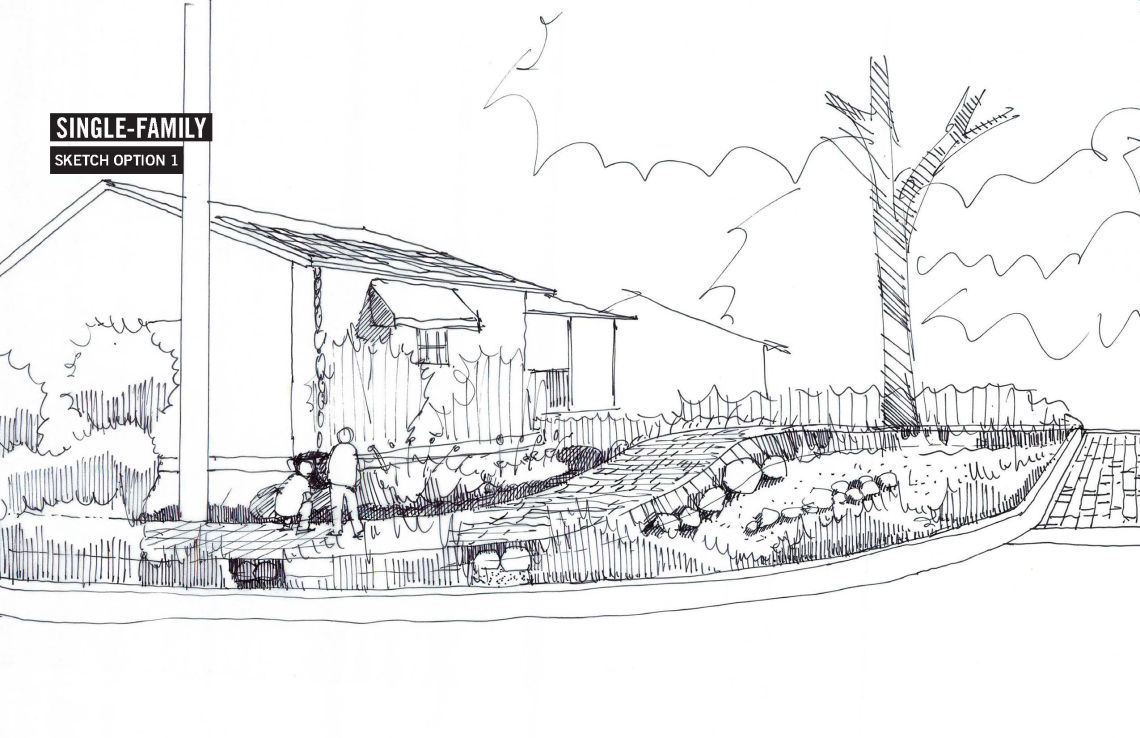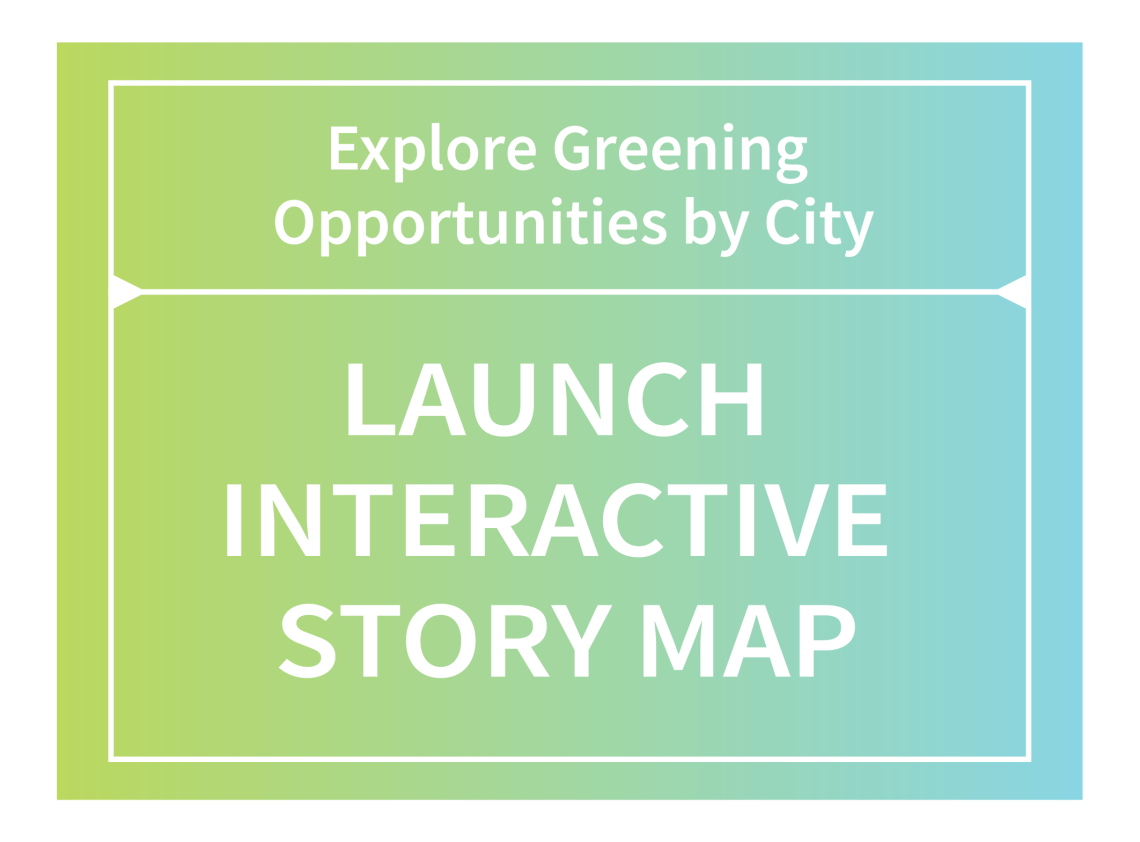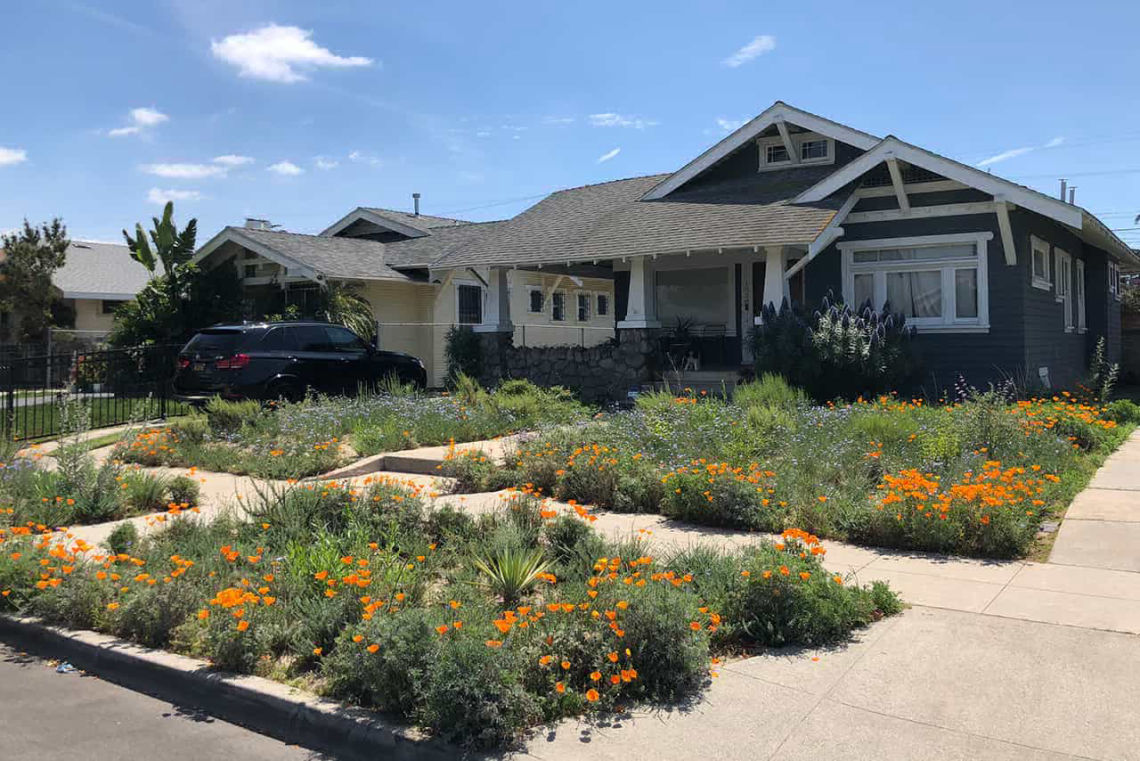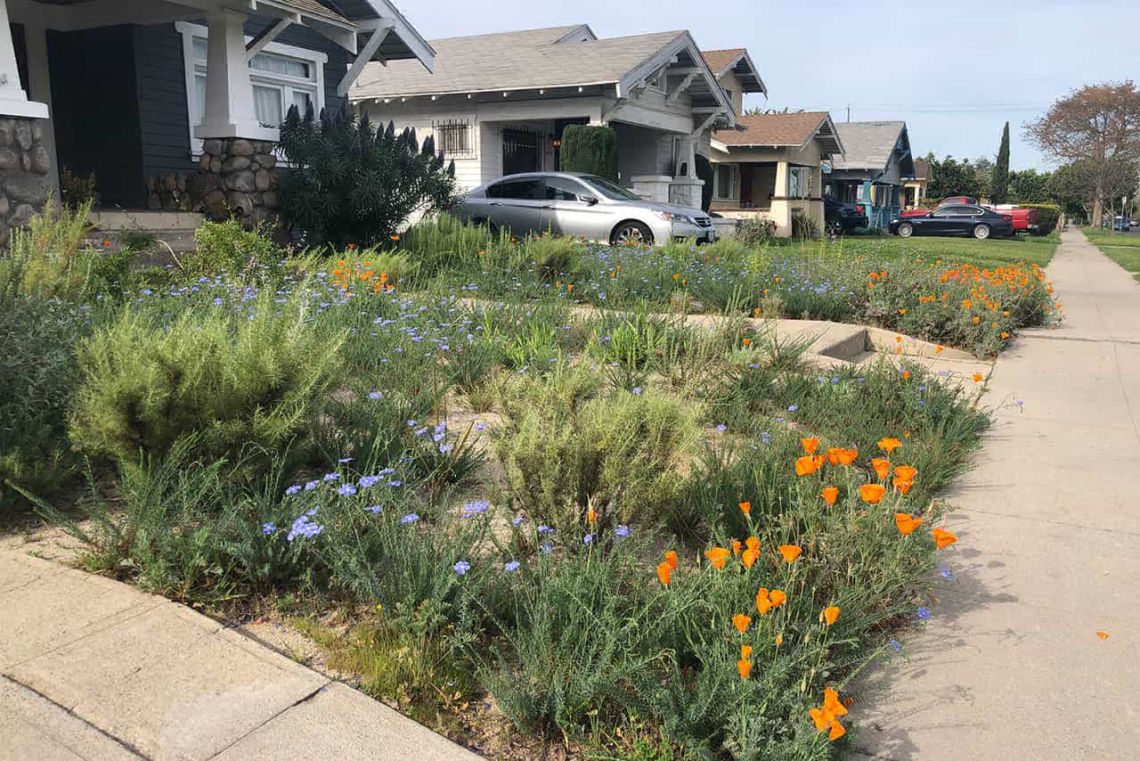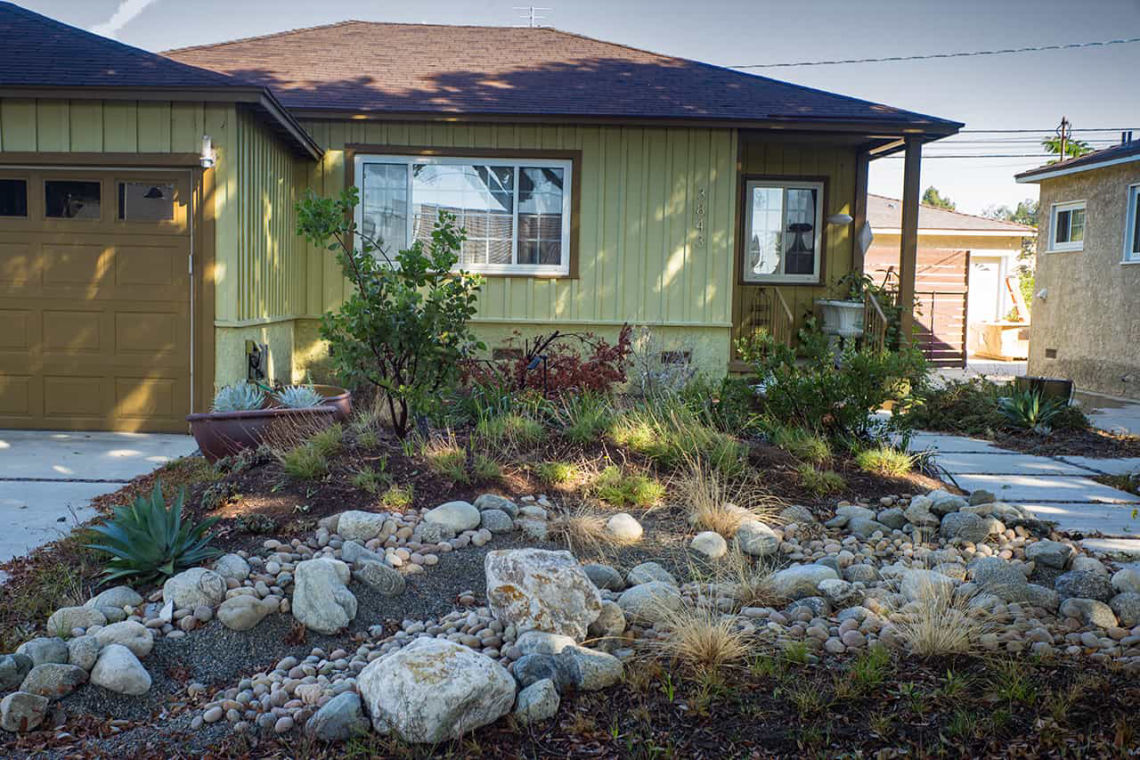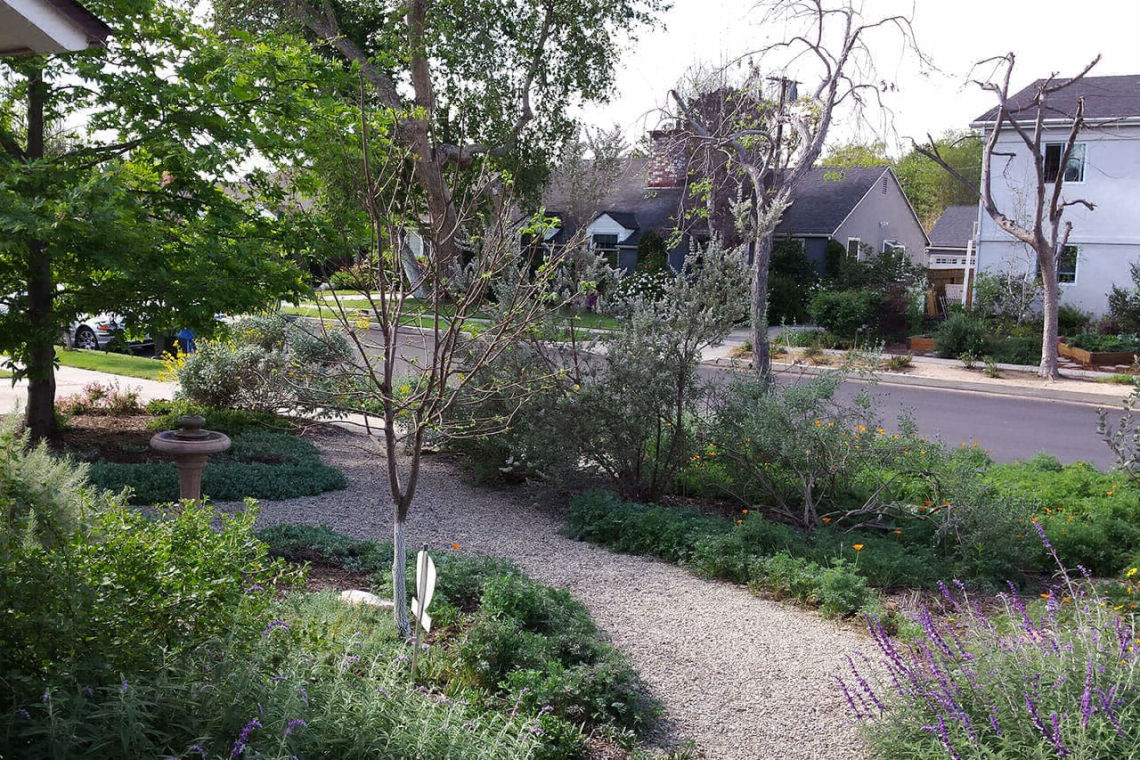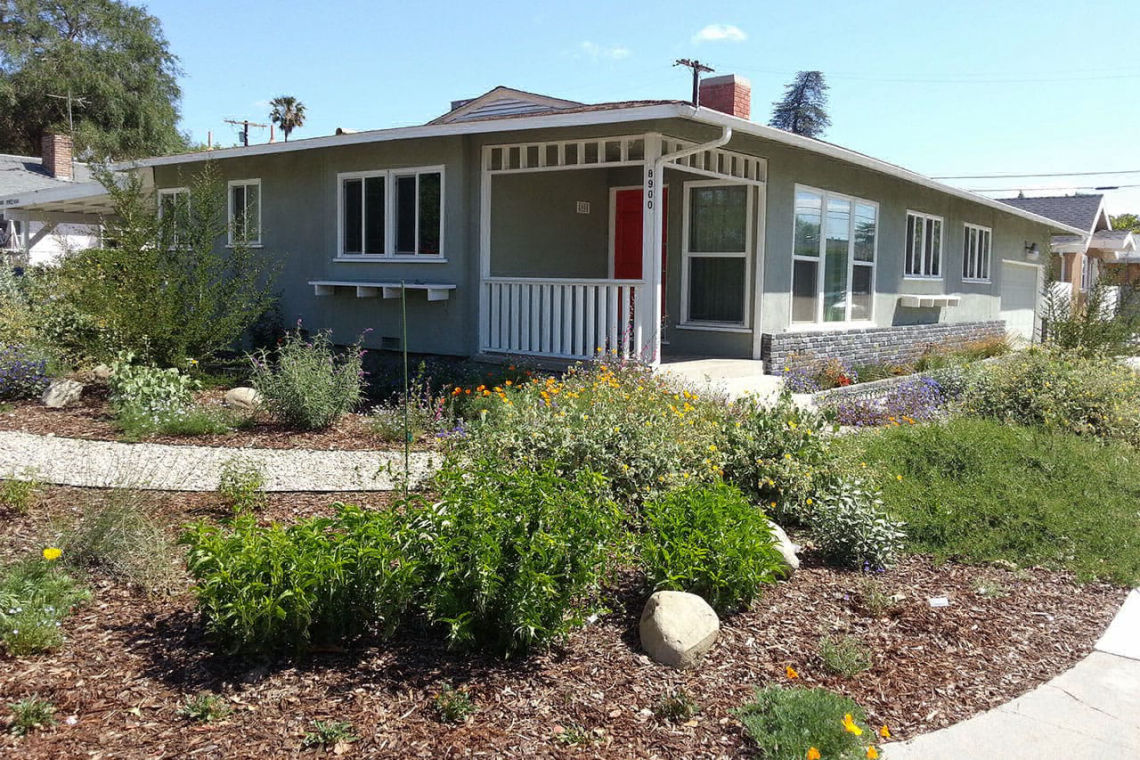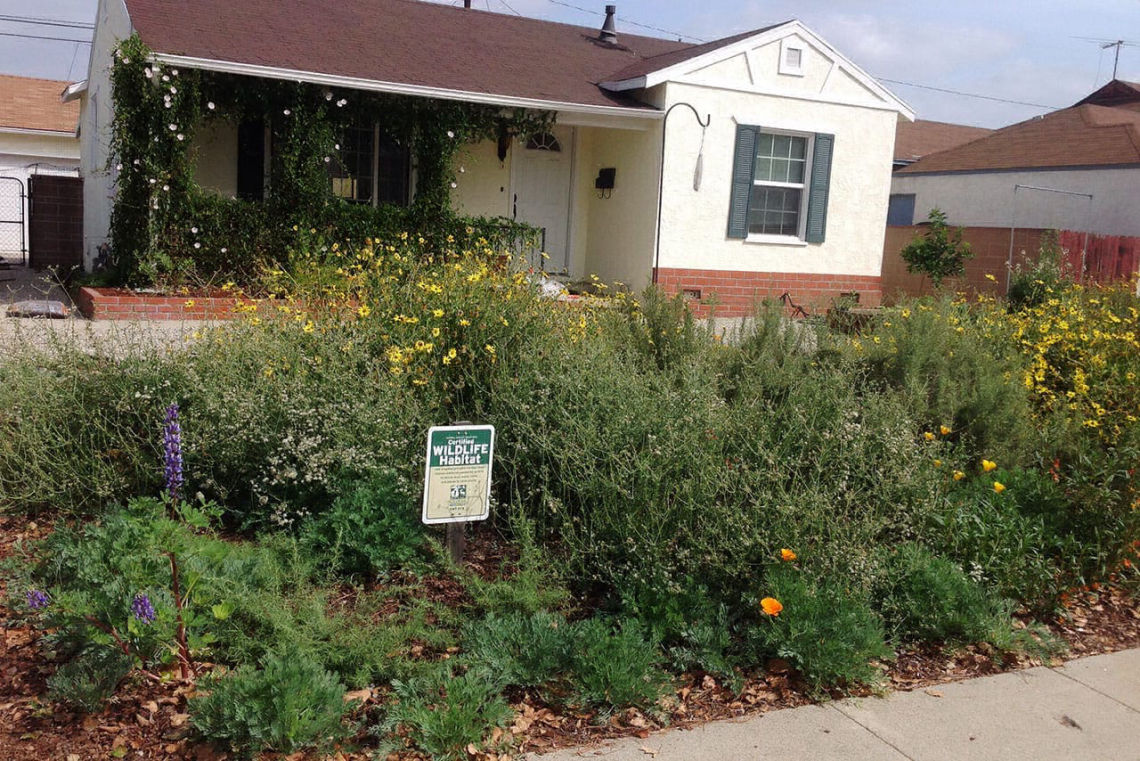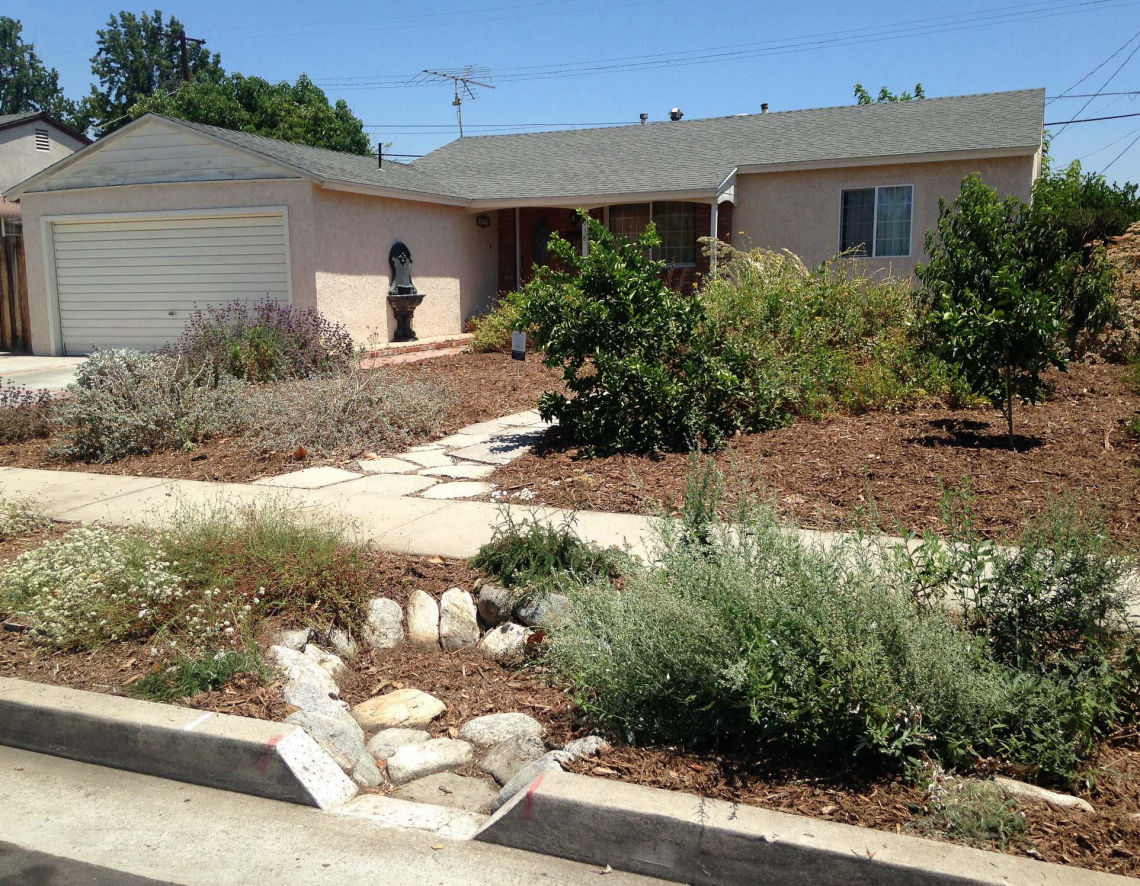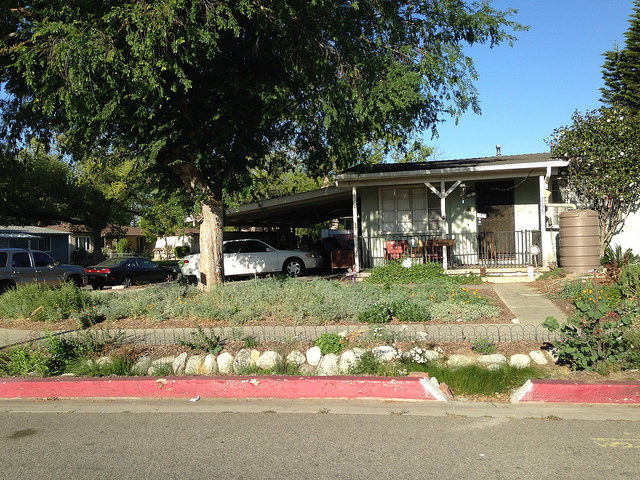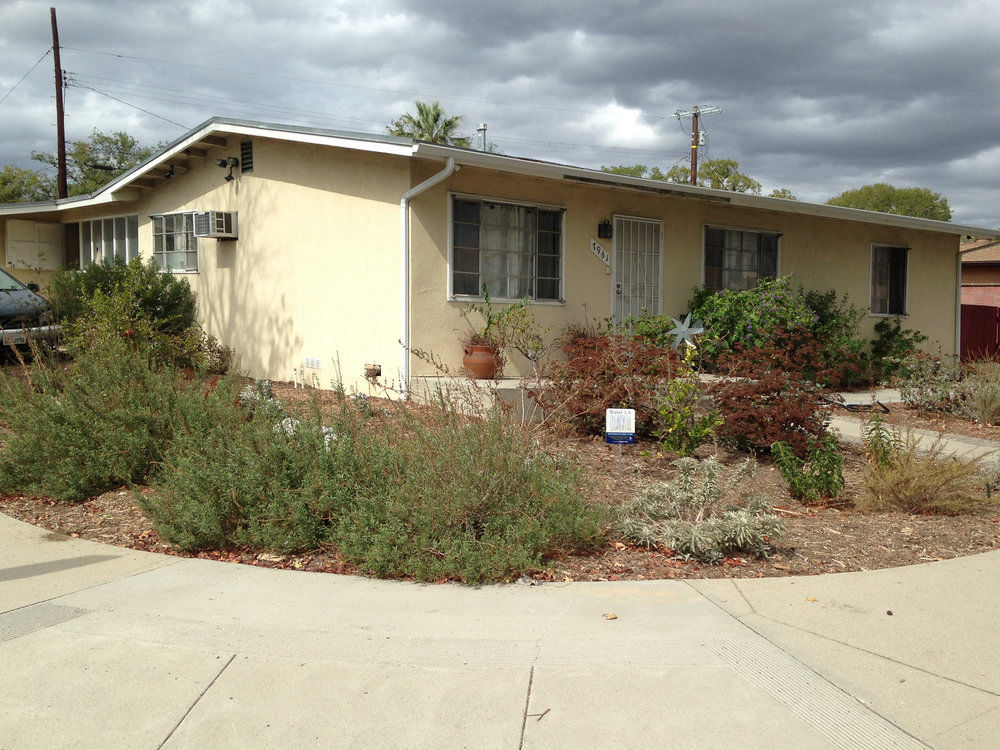Single Family Housing
Bringing Nature Back, One Yard At A Time
Homeowners who reduce lawns and install nature-based solutions reap the rewards of bringing life back into their home landscapes. From simple measures like capturing rain and planting climate-appropriate natives, we can save on water and resource costs, and—most importantly—create thriving, eco-friendly landscapes full of birds, butterflies, and natural beauty.
greenscape title visualizing

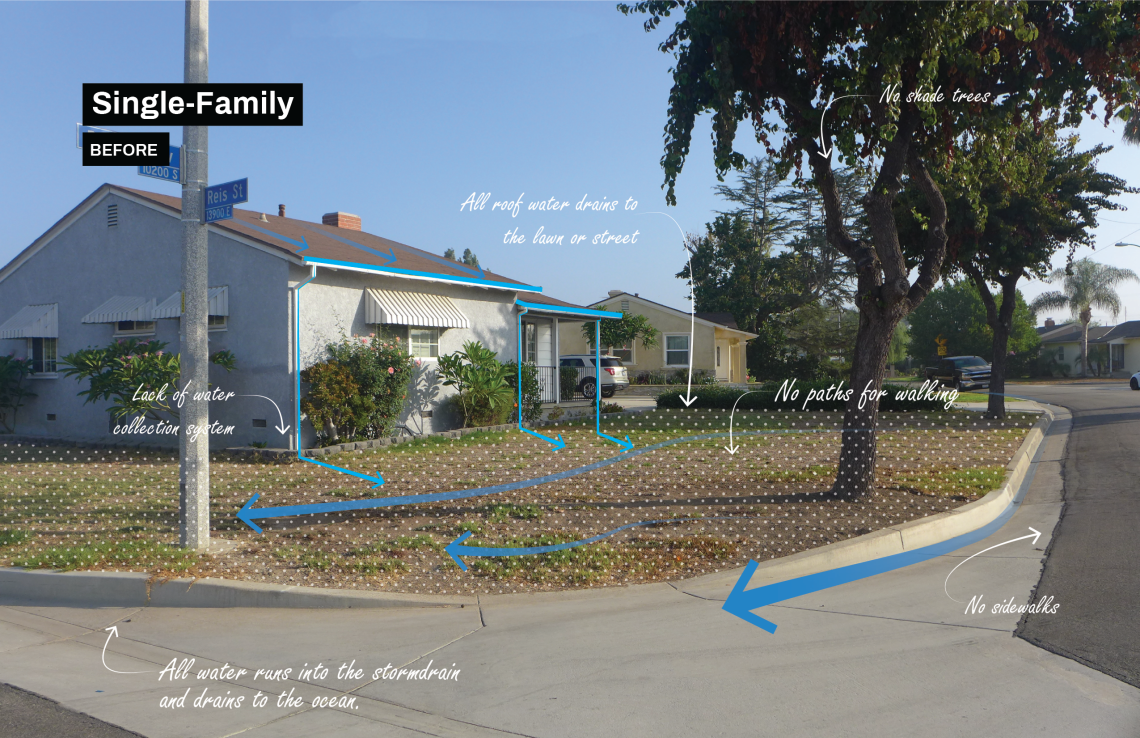
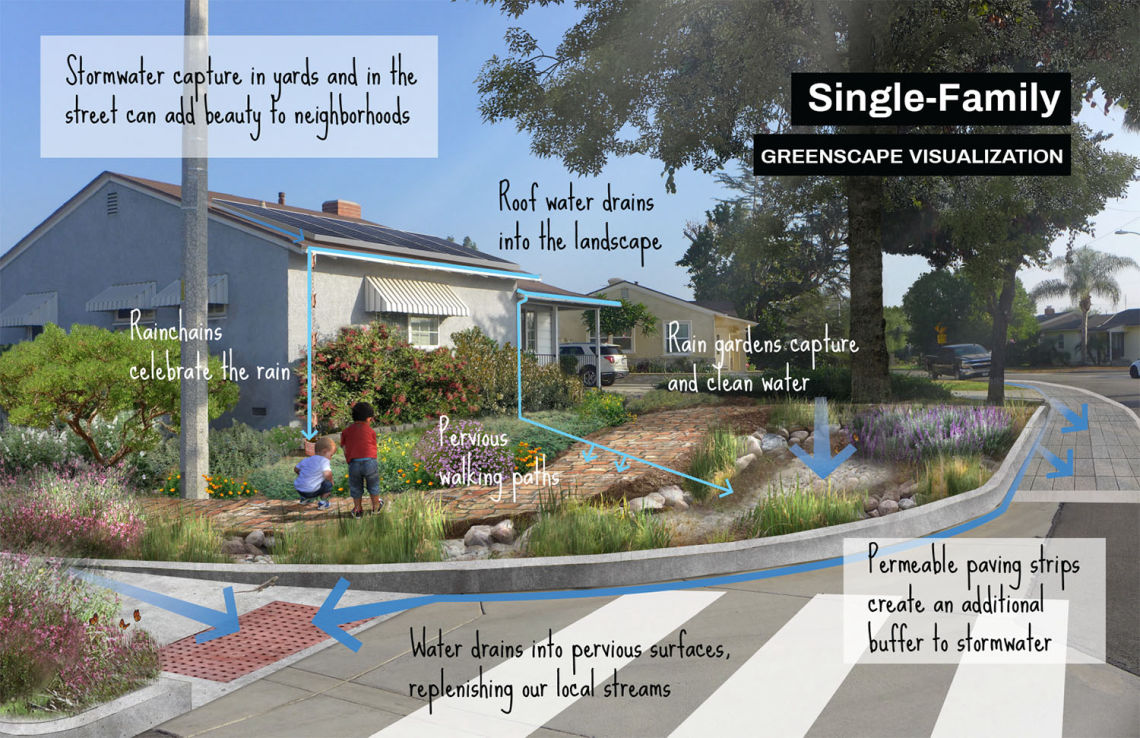
Every Yard Can Make A Difference
↓About 60% of land across the Gateway Cities is single family residential. On average, up to 70% of home water use is for watering yards. This means that every homeowner can have a huge impact by capturing, conserving, and reusing water in their yards.
Contribute to Climate Resilience
↓Globally, soil holds more than three times all the carbon there is in the atmosphere — much more than trees alone. Planting trees and plants, mulching, and avoiding compaction builds healthy soil, and has the potential to impact climate change by absorbing carbon and other greenhouse gasses.
Save Money
↓Replacing lawn and needy landscapes reduces water and cuts out chemicals, lawn mowing, and waste disposal which can easily save hundreds of dollars a year and more. A typical native plant yard uses 80% less water, makes less than 50% of the green waste, and needs only 25% of the maintenance of a conventional yard with a lawn. [1]
Go Native
↓Los Angeles is in a recognized ecological hotspot. We get this designation by both having more diverse native plants and animals than most other places in the world, and also for the severe threats that they face here. Almost all native wildlife is dependent on native plants (up to 97% of all native insects, which are a critical food source for most larger wildlife). Planting native plants and flowers provide essential food and homes for birds, butterflies, and other life that are important parts of our environmental heritage.
greenscape title onthemap

The Single Family Housing greenscape includes residential parcels that are typically dominated by manicured lawns that consume a lot of water, are costly to maintain, and provide little habitat benefit. While most greenscapes are proposed to build equity and increase green space for disadvantaged communities, the conversion of grass yards to more climate-appropriate, natural landscapes is most realistic for development by residential home owners with higher economic means and who already have access to nearby green space. This greenscapes prioritizes sites with household incomes of $100K and above. However, single family housing in disadvantaged areas should continue to be explored by public agencies and non profits as grants and incentive programs become available.
Scroll around and zoom into the map to see Single Family Housing throughout the Gateway Cities region. You can also use the layers panel (top left) to toggle on and off all greenscape types. Where are the opportunities in your neighborhood?
greenscape title examples

Since 2003, Theodore Payne Foundation has hosted tours of Southern California homes featuring sustainable landscaping. The Garden Tour showcases how native gardens are beautiful, can be designed on any budget, and be filled with life.
The Water LA Program retrofits homes with numerous water capture strategies, including notched curbs, rain gardens, cisterns, and permeable driveways. The program was developed to explore the possibilities of LA residents playing a substantial role in managing the region’s stormwater.
_______
Have a successful example you'd like featured in this vision plan? Fill out this form and let us know!
Benefits
greenscape title resources

The Water-Wise Home: How to Conserve, Capture, and Reuse Water in Your Home and Landscape. Allen, Laura. (2015). Storey Publishing: North Adams, MA.
How to Save Water and Beautify your Landscape ... the Sustainable Way (video seminar). UC Cooperative Extension.
Swale & Rain Garden—How To. California Water Boards.
Rain Garden Installation & Lawn Removal. The Bay Foundation.
Reimagining the California Lawn. Bornstein, C. Fross, D. O’Brien, B. (2011). Los Olivos, CA: Cachuma Press.
Rainwater Harvesting for Drylands and Beyond, Vol. 1, 3rd Edition. Lancaster, Brad. (2019). Tucson, AZ: Rainsource Press.
Ocean Friendly Gardens. The Surfrider Foundation
How To Build a Rain Garden. PBS. "This Old House"
Calscape. California Native Plant Society.
Theodore Payne Foundation for Wildflowers and Native Plants.
Made with ❤️ by TreeStack.io

